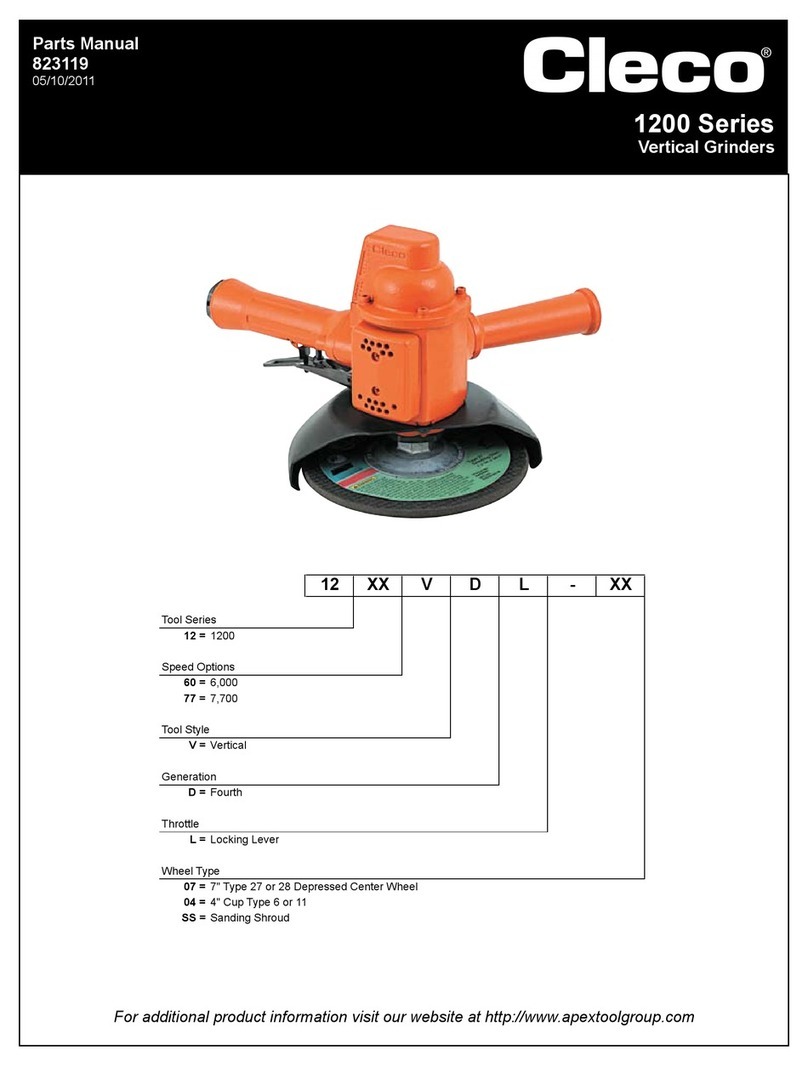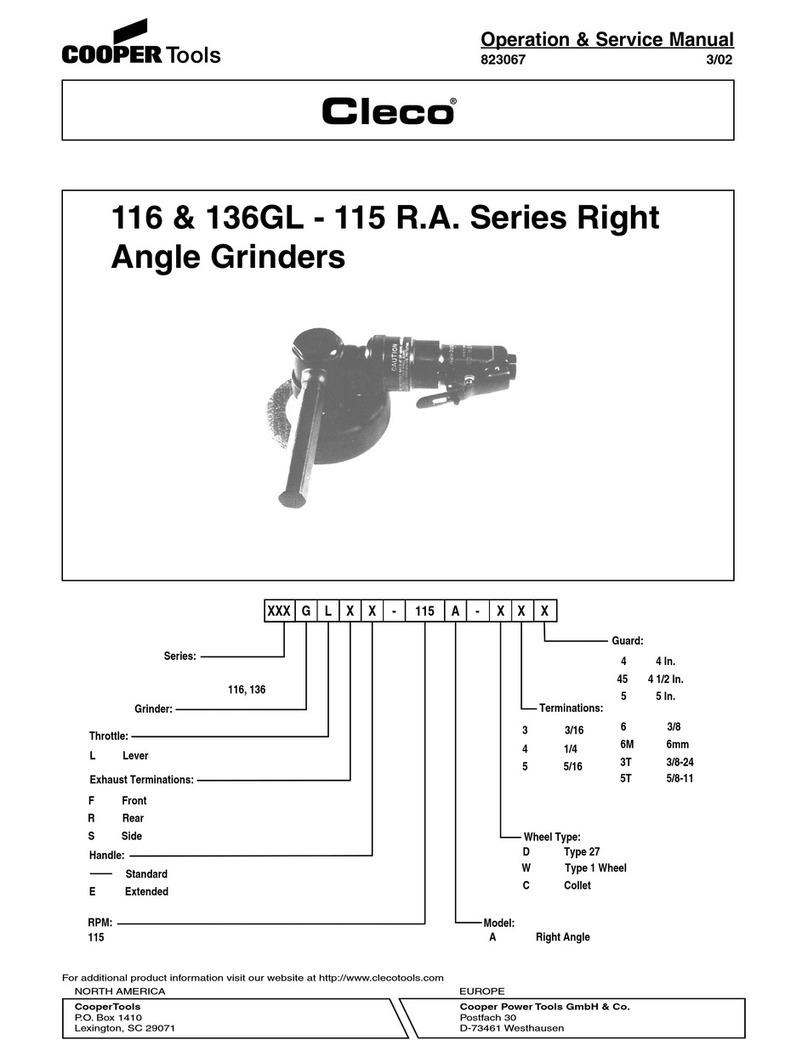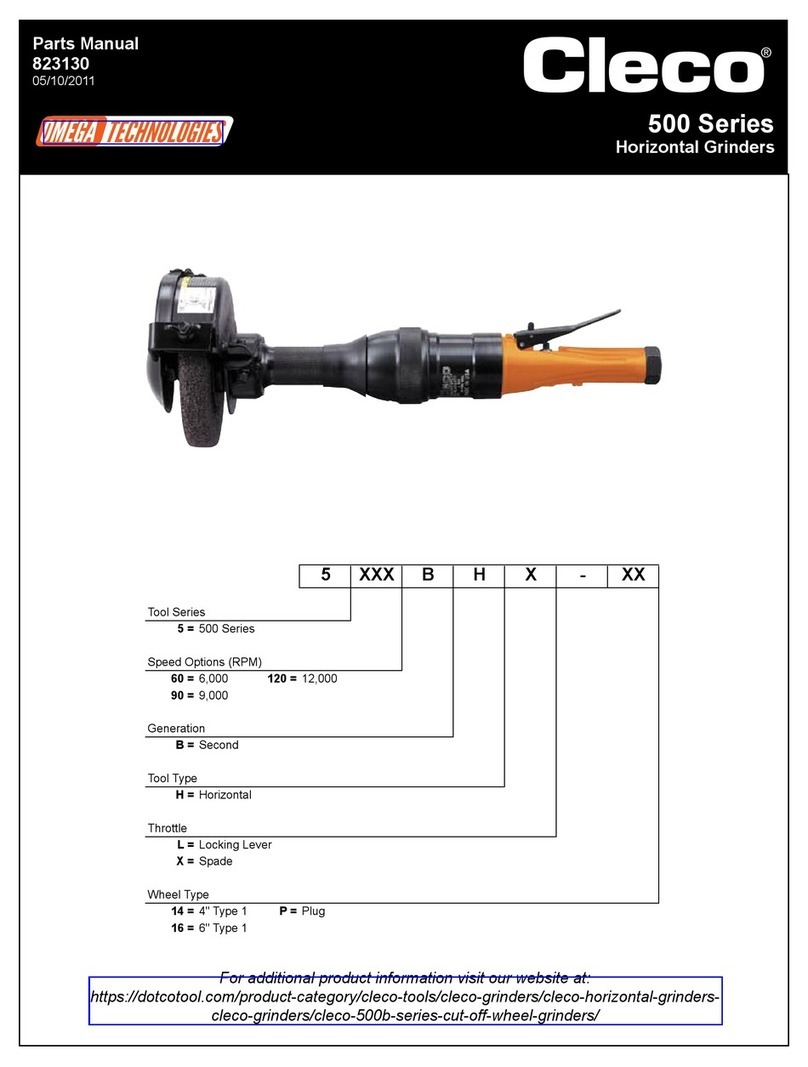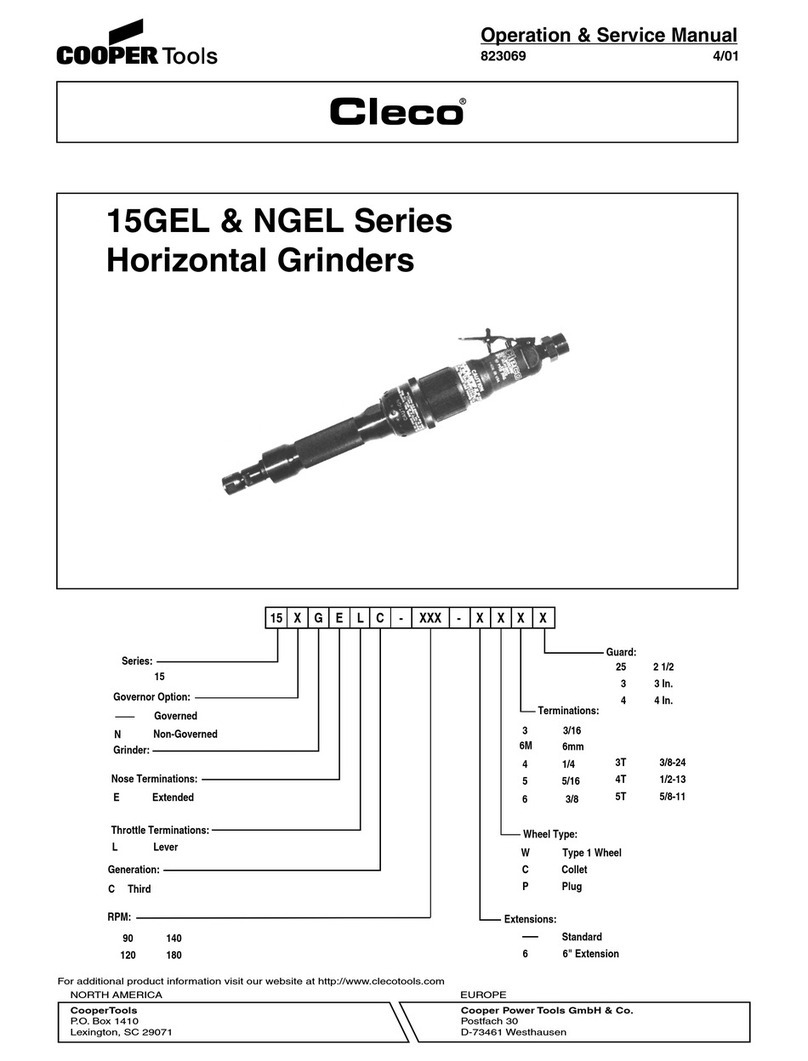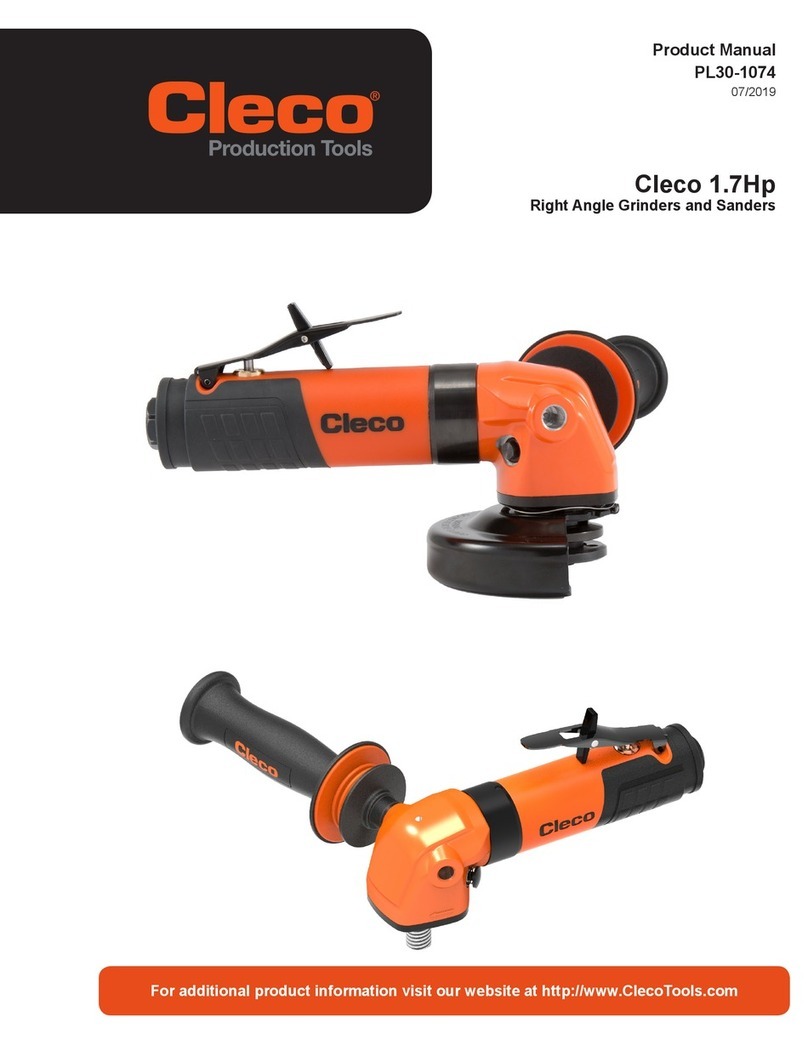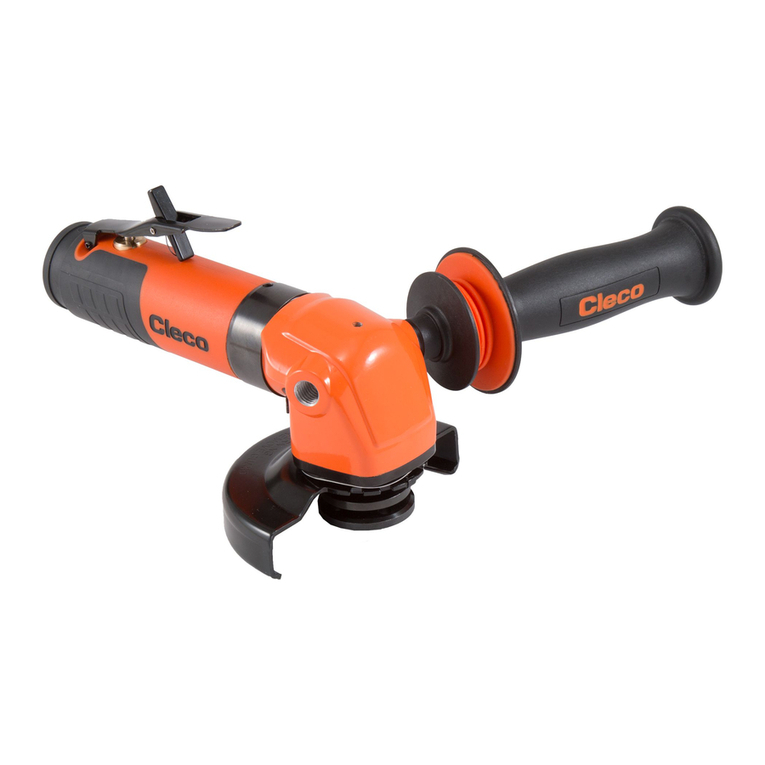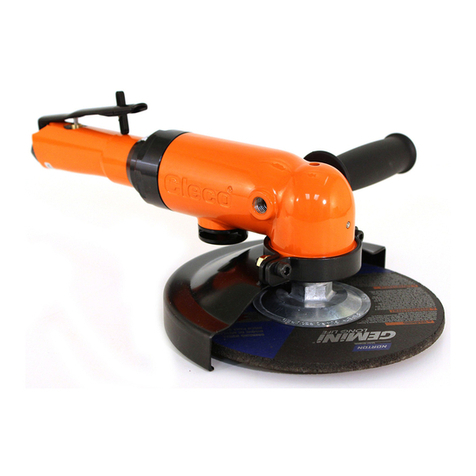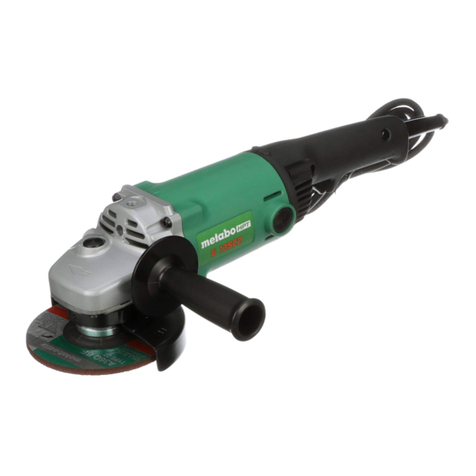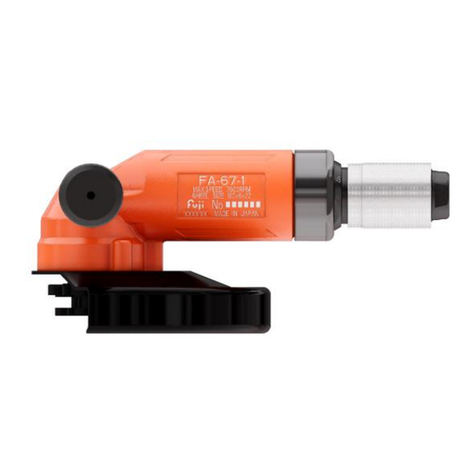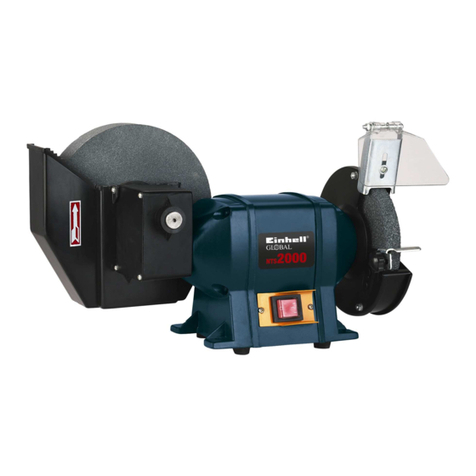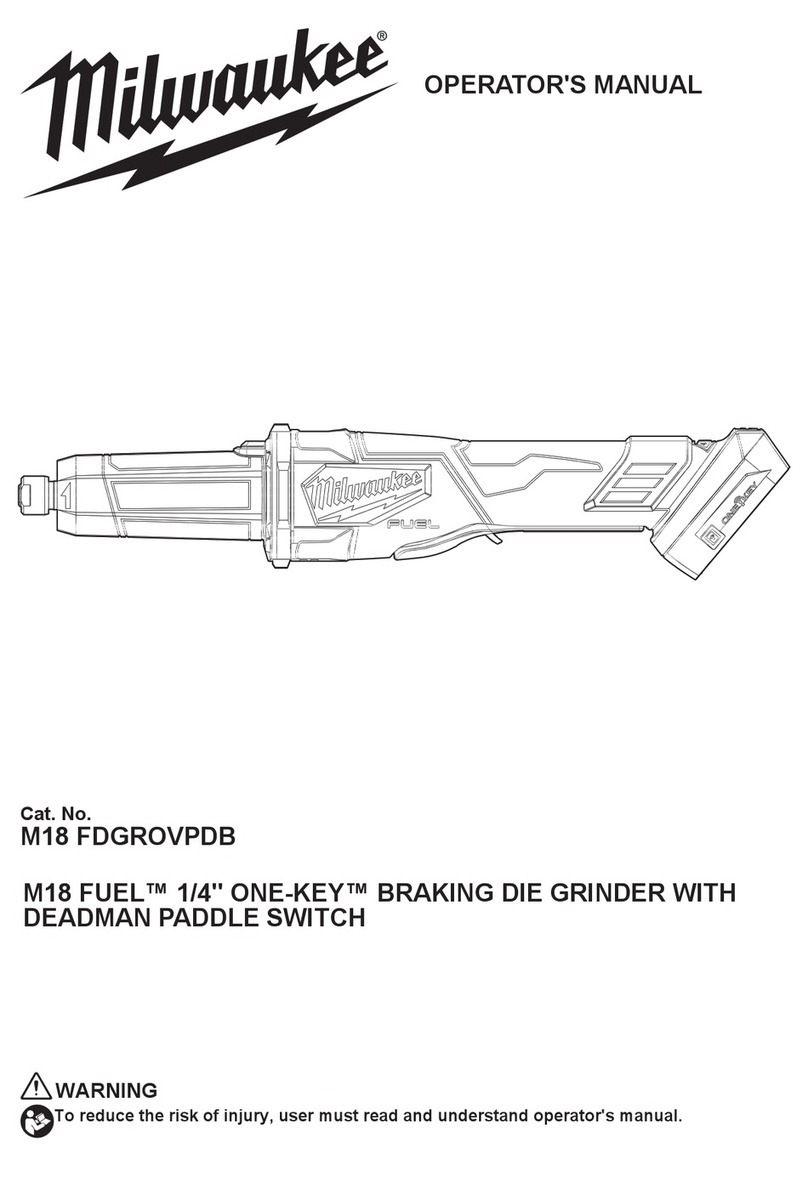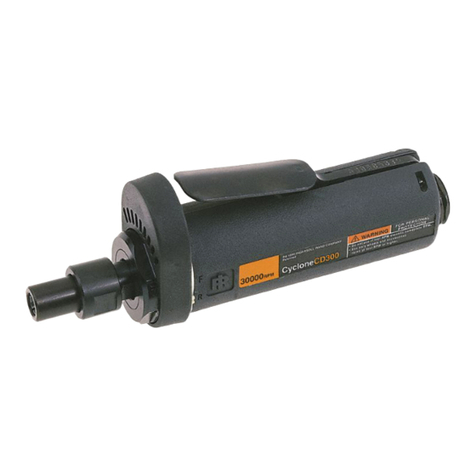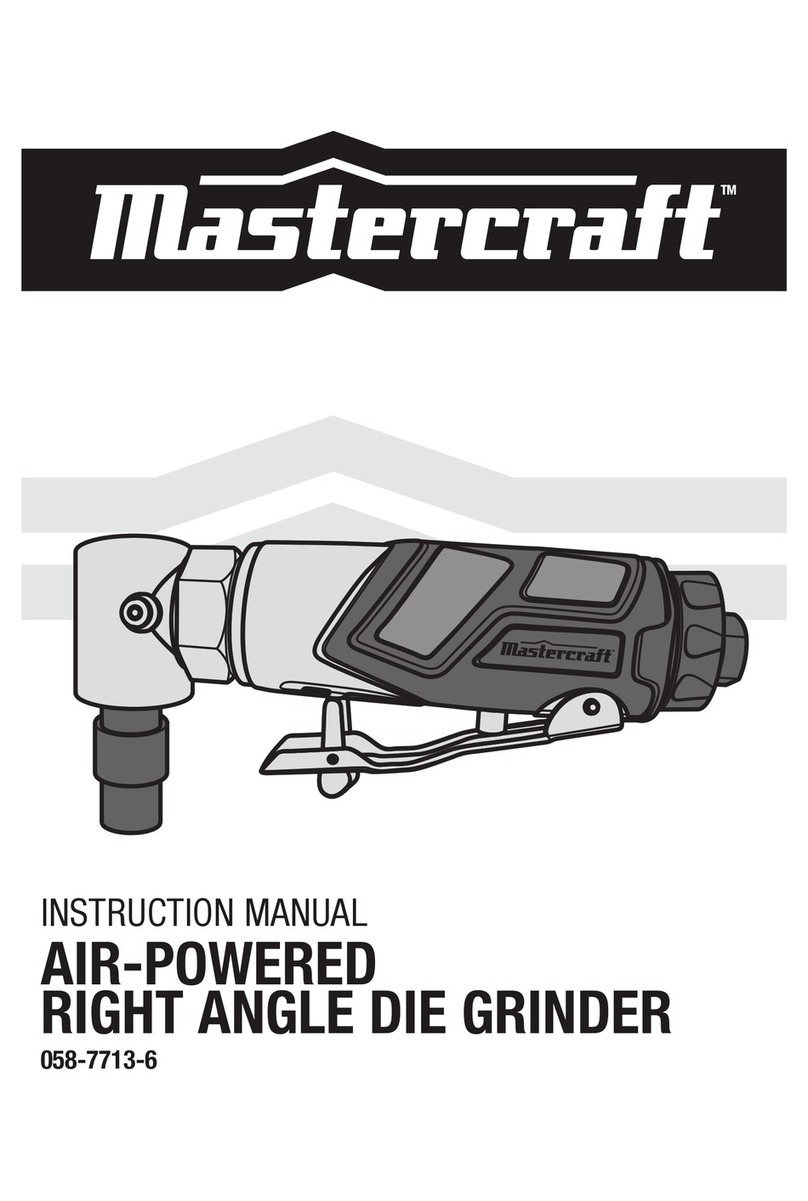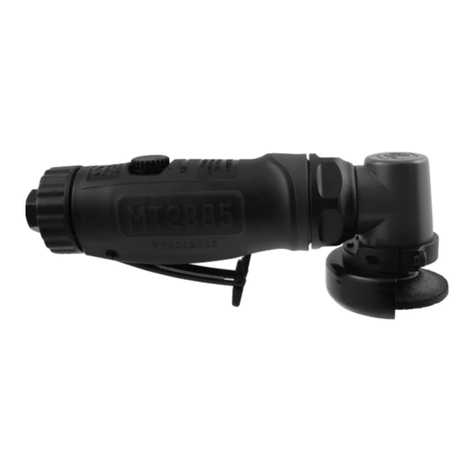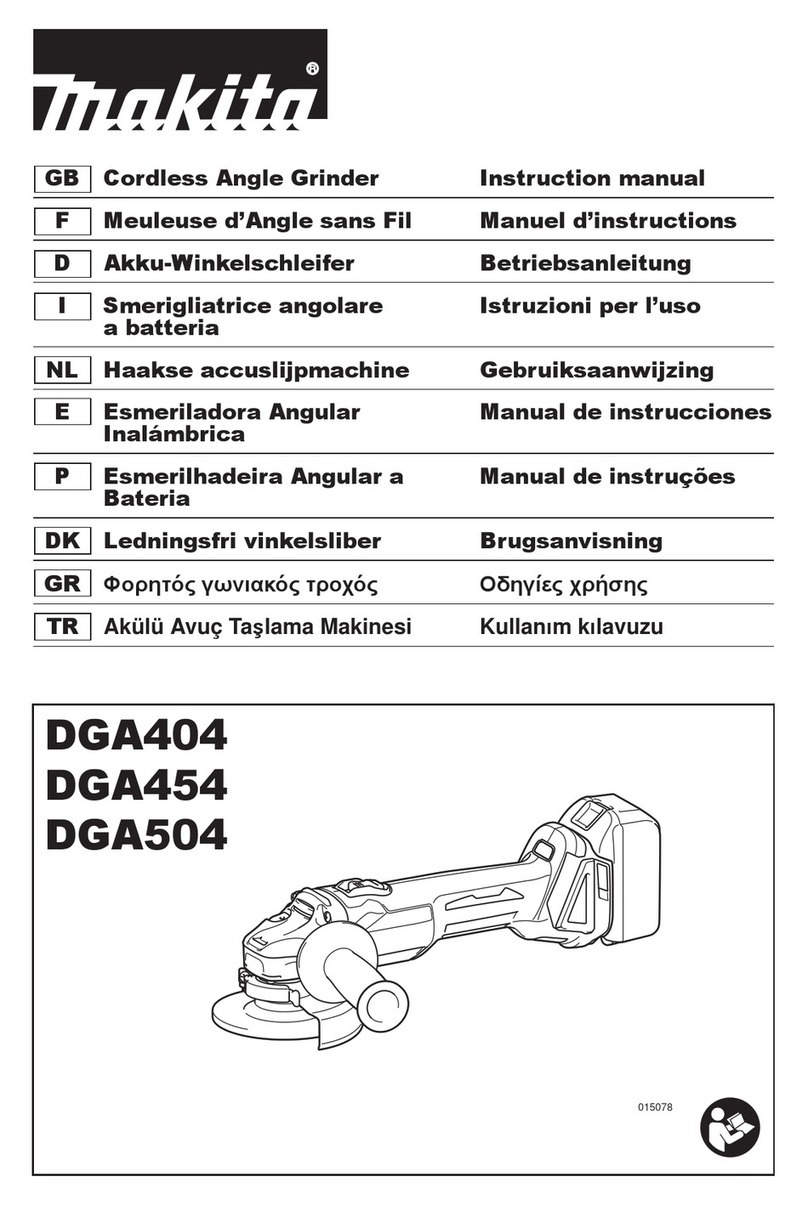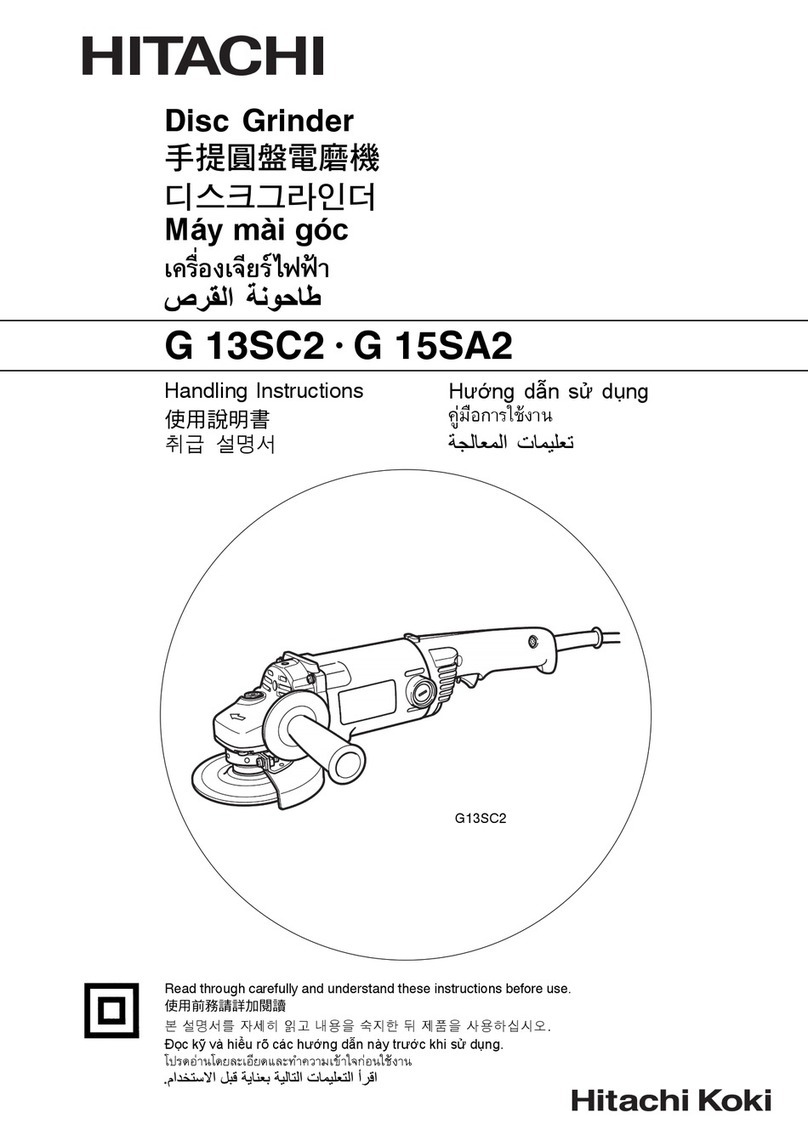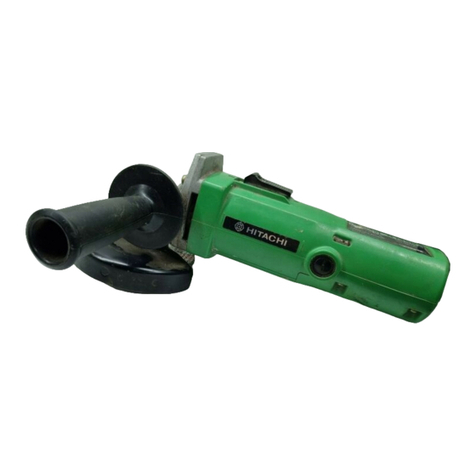
4
Safety Recommendations
Some individuals may be susceptible to disorders of the
hands and arms when performing tasks consisting of highly
repetitive motions and/or exposure to extended vibration.
Cumulative trauma disorders such as carpal tunnel syn-
drome and tendonitis may be caused or aggravated by
repetitious, forceful exertions of the hands and arms.
Vibration may contribute to a condition called Raynaud's
Syndrome. These disorders develop gradually over peri-
ods of weeks, months, and years. It is presently unknown
to what extent exposure to vibrations or repetitive motions
may contribute to the disorders. Hereditary factors,
vasculatory or circulatory problems, exposure to cold and
dampness, diet, smoking and work practices are thought to
contribute to the conditions.
Tool operators should be aware of the following warning
signs and symptoms so that a problem can be addressed
before it becomes a debilitating injury. Any user suffering
prolonged symptoms of tingling, numbness, blanching of
fingers, clumsiness or weakened grip, nightly pain in the
hand, or any other disorder of the shoulders, arms, wrists,
or fingers is advised to consult a physician. If it is deter-
mined that the symptoms are job related or aggravated by
movements and postures dictated by the job design, it may
be necessary for the employer to take steps to prevent
further occurrences. These steps might include, but are not
limited to, repositioning the workpiece or redesigning the
workstation, reassigning workers to other jobs, rotating
jobs, changing work pace, and/or changing the type of tool
used so as to minimize stress on the operator. Some tasks
may require more than one type of tool to obtain the
optimum operator/tool/task relationship.
The following suggestions will help reduce or moderate the
effects of repetitive work motions and/or extended vibration
exposure:
•Use a minimum hand grip force consistent with
proper control and safe operation
•Keep body and hands warm and dry (cold weather
is reported to be a major factor contributing to
Raynaud's Syndrome)
•Tasks should be performed in such a manner that
the wrists are maintained in a neutral position,
which is not flexed, hyperextended, or turned side
to side
•Avoid anything that inhibits blood circulation
—Smoking Tobacco (another contributing factor)
—Cold Temperatures
—Certain Drugs
•Stressful postures should be avoided —select a tool
appropriate for the job and work location
•Avoid highly repetitive movements of hands and
wrists, and continuous vibration exposure (after each
period of operation, exercise to increase blood circu-
lation)
•Use quality abrasive wheels
•Keep tool well maintained and replace worn parts
Work gloves with vibration reducing liners and wrist supports are
available from some manufacturers of industrial work gloves.
Tool wraps and grips are also available from a number of
different manufacturers. These gloves, wraps, and wrist sup-
ports are advertised claiming to reduce and moderate the effects
of extended vibration exposure and repetitive wrist trauma.
Since they vary widely in design, material, thickness, vibration
reduction, and wrist support qualities, it is recommended that the
glove, tool wrap, or wrist support manufacturer be consulted for
items designed for your specific application. WARNING! Proper
fit of gloves is important. Improperly fitted gloves may
restrict blood flow to the fingers and can substantially
reduce grip strength.
USE QUALITY ABRASIVE WHEELS
The primary source of vibration when using a portable grinder is
an abrasive wheel that is out of balance, out of round, untrue, or
possibly any combination of all three.
The use of quality abrasive wheels which are well balanced,
round, and true is highly recommended as they have been found
to significantly reduce vibration. Some abrasive wheels lose
their balance, roundness, and trueness as they wear from use.
Because of the abusive nature of the vibration caused by out of
balance, out of round, and untrue condition of some abrasive
wheels, it is felt that these wheels are more susceptible to failure.
Excessive vibration may signal imminent wheel failure. Flat
spotting of the abrasive wheel, caused by grinding the wheel to
a stop after the power has been shut off can result in changes to
the balance and shape of the wheel. Be sure the grinding wheel
has stopped before setting the tool down. Set the tool in a tool
rest or tool holder when not in use.
WARNING!
Repetitive work motions and/or vibration
can cause injury to hands and arms.
Use minimum hand grip force.
Keep body and hands warm and dry.
Avoid anything that inhibits blood curculation.
Avoid continuous vibration exposure.
Keep wrists straight.
Avoid repeated bending of wrists and hands.
Extension Neutral Flexion Radial Deviation Neutral Ulnar Deviation
Avoid Avoid Avoid
OK Avoid OK

















